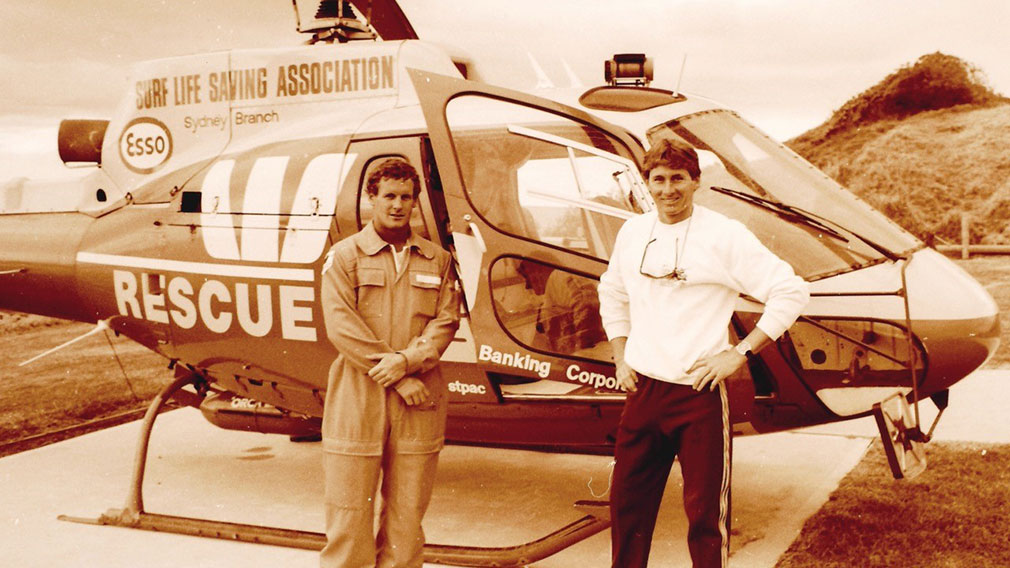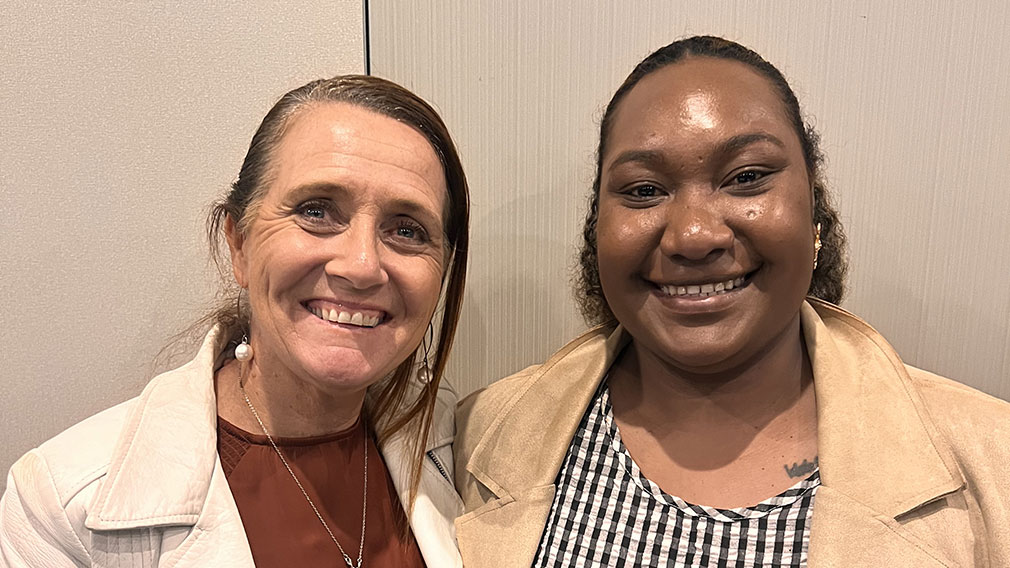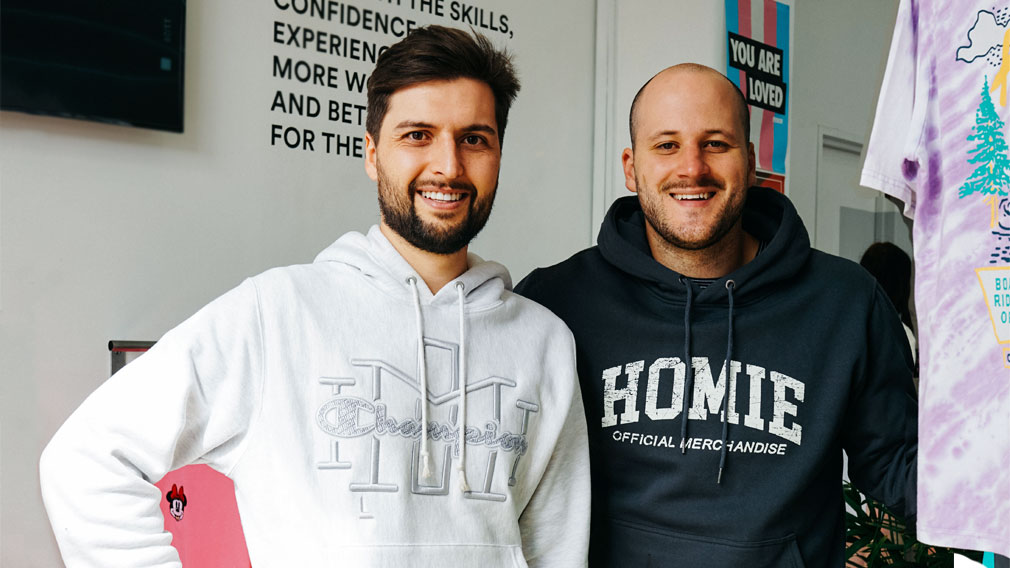Where art and business sculpt a studio like no other
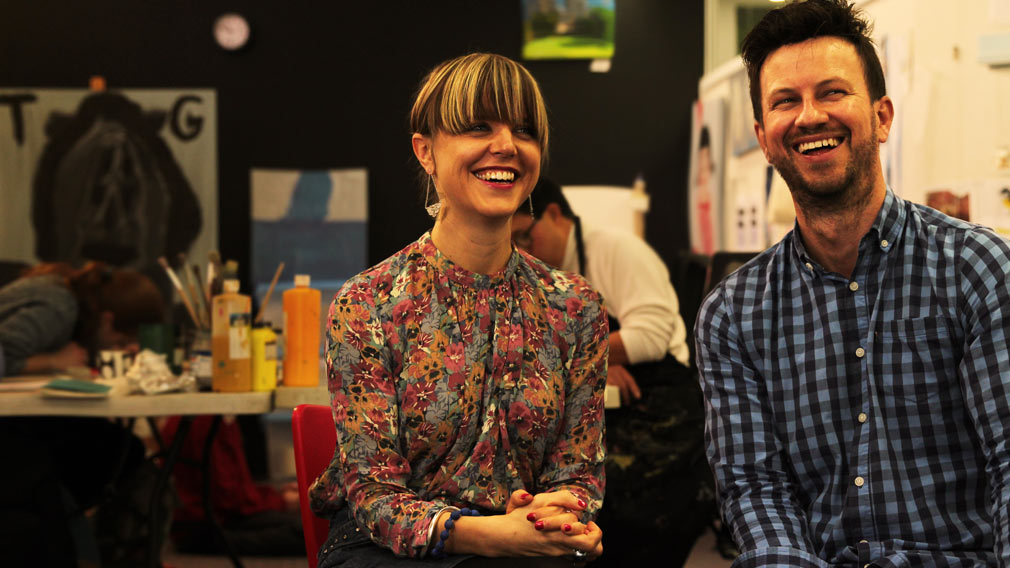
Gabrielle Mordy (left), CEO of Studio A, with Westpac senior marketing manager Steve Badgery, who volunteers as a director on Studio A’s board. (Emma Foster)
Gabrielle Mordy created unique social enterprise, Studio A, to help forge the artistic careers of talented visual artists with intellectual disability. She met Westpac employee Steve Badgery through a volunteer business mentoring program. Ever since, Steve has been hooked on helping Gabrielle achieve her vision for Studio A.
Steve:
When I heard about Studio A, and met Gabrielle, I was immediately drawn in.
It was over two years ago, when we were both part of the Social Traders’ Crunch program – where people with corporate roles volunteer to help social entrepreneurs pitch their business to investors.
Gab is the driving force behind Studio A. She had been working as a professional artist offering a program of creative activities for people with disabilities. She saw artists in the program that clearly had the talent to forge careers as professional artists – all they needed was the right support. And that’s how Studio A was born.
Now there are 13 artists working at Studio A, creating incredible commissioned works, from paintings, to installations, to intricate cartoons, to soft furnishings. And we hope that number will grow.
There is no other art studio like it in Australia. In fact, Gab won a Churchill Fellowship and an Australia Council Career Development Grant to research supported studios around the world, which confirmed that what Studio A is doing is unique globally.
For me, getting involved was quite personal. My niece has a disability and I’d always thought about what life will be like for her when she grows up. While Studio A might not solve it for her, it opened my eyes to what might be possible. The things I’m learning are also helping to influence change for her.
When you meet Gab, it’s clear how driven she is and how much she cares about what she does. She’s passionate about art and about the people she works with. And she wants to make a difference. That made it easy for me to say yes to a role on the Studio A board.
I remember her saying the biggest challenge is to change people’s perceptions. She said, we don’t want people to love the art because it’s been created by people with disabilities. We want the art to be loved because it’s been created by a talented artist.
I take my hat off to her. She is so many things for Studio A. She’s the CEO as much as she’s the grant writer, the marketer, the finance manager, the business development manager. She’s all of these in the space of hours and adapts to each role, flawlessly. She also works hands-on with every individual artist, with each needing a completely different Gabrielle.
She comes up against so many roadblocks and she takes them all in her stride. She has to constantly apply for grants to keep the studio running. It can be disheartening when you get all the way down a funding pathway and hit a dead-end, but Gab just turns around and starts again.
Seeing the way she manages has made me think about how I go about my day. I’ve really latched onto those personality traits of hers. It’s also motivated me to get involved further. I’ve made a commitment to see through the three-year plan we’re working on.
My partner and family have been amazed I’ve had this opportunity. It’s almost foreign to them that an organisation like Westpac can support me to do this while I’m at work.
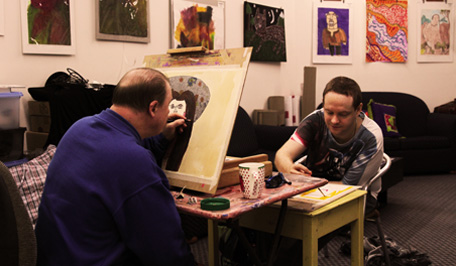
Artists Mathew Calandra (left) and Greg Sindel are among 13 artists in residence at Studio A.
Gabrielle:
I was intimidated when I first met Steve! I hadn’t worked with a lot of people from the corporate sector or with marketing professionals, and had assumptions about how it might be.
But I was impressed by his warmth, friendliness and genuine interest, and his willingness to make things translatable to me. I quickly lost any sense of intimidation.
We met almost every fortnight, over the six months of The Crunch program. I thought I would be the one listening intently and taking notes, but it was clear that he was genuinely interested in learning more about Studio A. He took the time to really listen to what our challenges were and how he could make sure his assistance was worthwhile.
He was able to translate his professional knowledge into something that was useful for us and help us refine what we needed and how we could get there.
I was nervous to ask Steve to join the board because I know what a commitment that is, while he still works full time as a senior Westpac marketer. But he couldn’t have been more enthusiastic, positive, committed. And that was really energising for me.
My hope for Studio A is that it develops a reputation as an enterprise that produces excellent, quality art with great commercial potential; that we become known for the talent of our artists; that we have works in the collections of major galleries; and have a robust business infrastructure so the artists can get on with making great art.
I also hope our artists become increasingly involved in Australia’s cultural conversation so people with intellectual disability are understood as being involved, complex individuals who make meaningful contributions to Australia’s society.
We’ve just bedded down our three-year plan to make Studio A a more sustainable enterprise – including increasing awareness, securing key customers, and having our work collected by major art institutions. As a director, Steve is critical in helping us drive those initiatives.
I feel very proud, and grateful, that Steve has been willing to continue his commitment to Studio A and deepen his involvement. It has been great to be challenged by him. It’s also helped me learn about communicating with people in the corporate sector, which is a critical market for us.
Crucially, Steve has linked us with other professionals with different skills – both within Westpac and in his own personal networks – which has helped to foster the business. Being on the board also seems to be a stimulating experience for him.
I look forward to Steve seeing us succeed.
Studio A is a supported studio based in Sydney Australia that paves professional pathways for artists living with intellectual disability so they can achieve their artistic and economic aspirations. The work of Studio A artists will be on display and available for purchase at upcoming exhibitions, including Sydney Contemporary at Carriageworks in September 2017. Alternatively, artworks can be commissioned or bought online. Studio A is a Westpac Foundation Community Grant recipient.
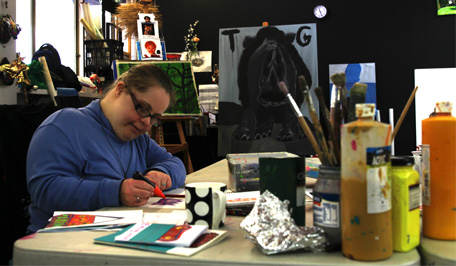
Artist Emily Crockford at work in Studio A.
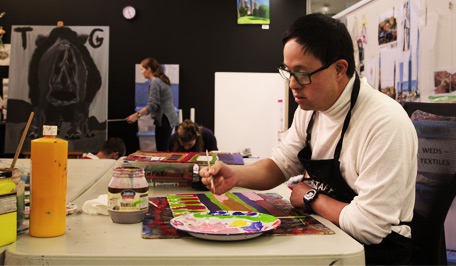
Studio A artist Damian Showyin.


